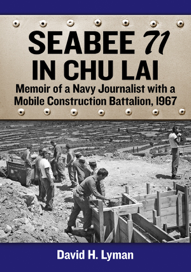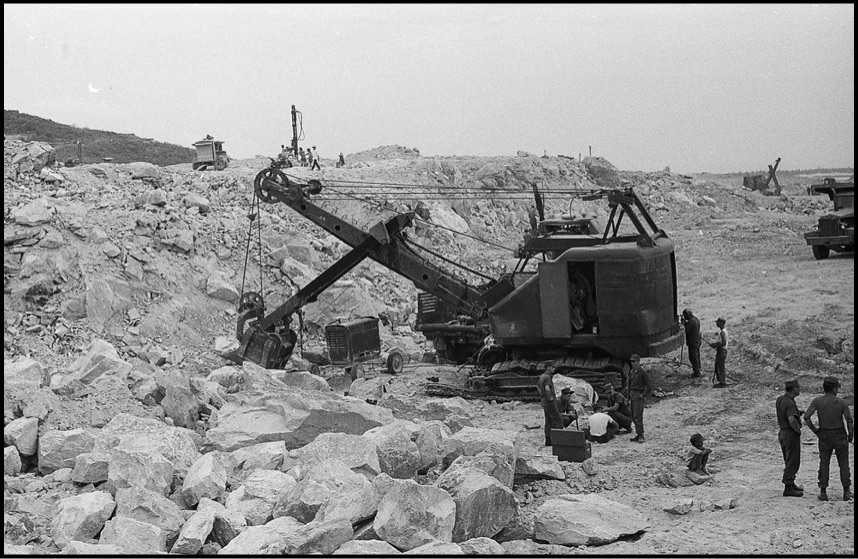The Book:
SEABEE71
IN CHU LAI
A 350 page memoir of a Navy Journalist's 14 months with the Seabees.

Photographs and text copyright © 1967 and 2019 by David H. Lyman

Seabee71.com

To get an idea of just how massive the construction was going on within the Chu Lai Enclave, all I need to do was go for a ride with LT Robert Sharp, OIC of our rock and stone operations, on his morning rounds.
We had just pulled into our first inspection stop–the Seabee rock quarry—two miles outside the Chu Lai perimeter, in the foot hills of the Highlands that rose in the west. There was no ignoring the feeling that we were being watched by the VC living in the mountains just beyond.
“How many of our men are here?” I asked the Lieutenant. “There must be a dozen or more.”
“The Quarry Boss here is Master Equipment Chief Sturges,” the Lieutenant said. “He has a crew of over 50 of our Seabees from Alpha Company. About half his stone crew is here, the rest operate Old Flintstone, the rock crusher and the Asphalt plant.” Sharp waved to a First Class, who had been directing lines of trucks arriving and departing. The PO traipsed over, covered in dust, sun glasses, open flack jacket and a hard hat instead of a steel helmet.
“EO1 Norman is in-charge of the day crew here,” Sharp said. “The night shift is run by EO1 Ashland. We operate this quarry 24-hours a day,” he added. “Our guys blast and move tons of granite into those waiting trucks bound for the rock crusher plant.”
I knew some of these Seabees–lifers, veterans of prior service, but most were seasoned professional stone-men, who’s left civilian life to join the Seabee IPO program last year.
“Is there any chance of the quarry being attacked?” I asked. After all, we are a few miles outside the perimeter.
“See those Marines and a few of our Seabees up there on the cliff?” he said, “They are armed with rifles and grenade launchers. They have deployed Claymore mines all around the quarry. They patrol the cliff, day and night.” The First Class and the Lieutenant were in deep conversation, so I got out of the jeep to photograph the operation. Air compressor drills are boring holes into the cliff top, creating a lot of noise and dust. Into this long line of deep holes goes sticks of dynamite, all wired together so they all go off the same time, carving away a wall of broken granite.
Two dozers, D-8’s, push and scrape loose boulders and rock into piles for a mammoth shovel and a few front-end loaders to scoop up, loading the waiting bodies of huge Euclid trucks–each piece of equipment driven by a shirtless, sweating, dust covered Seabee from SeventyOne. The story continues in the book . . . .
"The old girl needs constant repair . . " the LT said, as we pulled into the Quarry. A welder from A Company was fixing something on the rear of the huge shovel.
The Stone Men of Seventy-One
A short excerpt from the book . . . . click any image to the right to see enlarged images

The Book:
SEABEE71
IN CHU LAI
A 350 page memoir of a Navy Journalist's 14 months with the Seabees.

Photographs and text copyright © 1967 and 2019 by David H. Lyman
